Everything You Need To Know About Tattoo Removal Laser Machines
September 19, 2025 2025-09-24 14:11Everything You Need To Know About Tattoo Removal Laser Machines
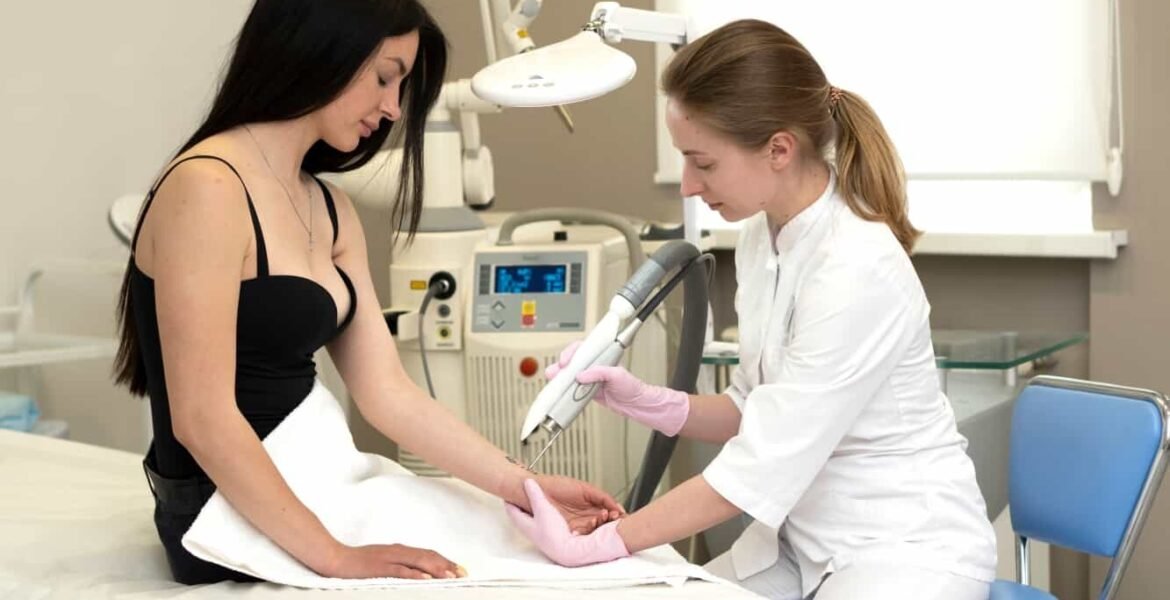
Everything You Need To Know About Tattoo Removal Laser Machines
Tattoos are an excellent way to keep a memory alive forever and, essentially, make it a part of one’s life. However, some memories may be blessings in disguise. While some may seem significant at one point in time, they are more painful to remove than to actually get.
Tattoo removal laser machine technology has revolutionized how clinics safely and effectively eliminate unwanted ink. They offer fast results for all skin tones and tattoo colors. These advanced machines cause minimal discomfort, heal more quickly, and require fewer sessions. This makes them the top choice for modern aesthetic practices that want to offer high-quality tattoo removal services.
It’s essential to remember that finding a reputable tattoo salon and a skilled artist is easier. Finding a clinic with an intense tattoo removal laser is harder.
Tattoos are beautiful and meaningful. However, they are permanent. Removing a tattoo often takes longer than getting one.
What is laser tattoo removal?
Preview: What kind of devices do people use? How long does the procedure take? And what does the process require?
The only way to remove tattoos from the skin is now with a Tattoo Removal Laser Machines. People also refer to this as Q-Switched laser treatment.
During the procedure, focused light pulses break apart the ink pigments in the tattoo. This heat targets the upper layers of the skin. The depth of the ink placement into the upper layers of the skin and its quantity cause the number of pulses to vary.
The process is a bit more uncomfortable than getting the tattoo. However, most people can handle it without needing any anesthesia.
Furthermore, the process splits into several sessions that occur days or weeks apart. A removal session is much quicker than getting a tattoo. However, some individuals may require more than one session to remove the pigment from their skin completely.
The length and number of removal sessions depend on the quality of the equipment, the tattoo’s age, and the colors used. As such, a small tattoo on the wrist may only require 2-3 sessions, while a larger one may need 10-15.
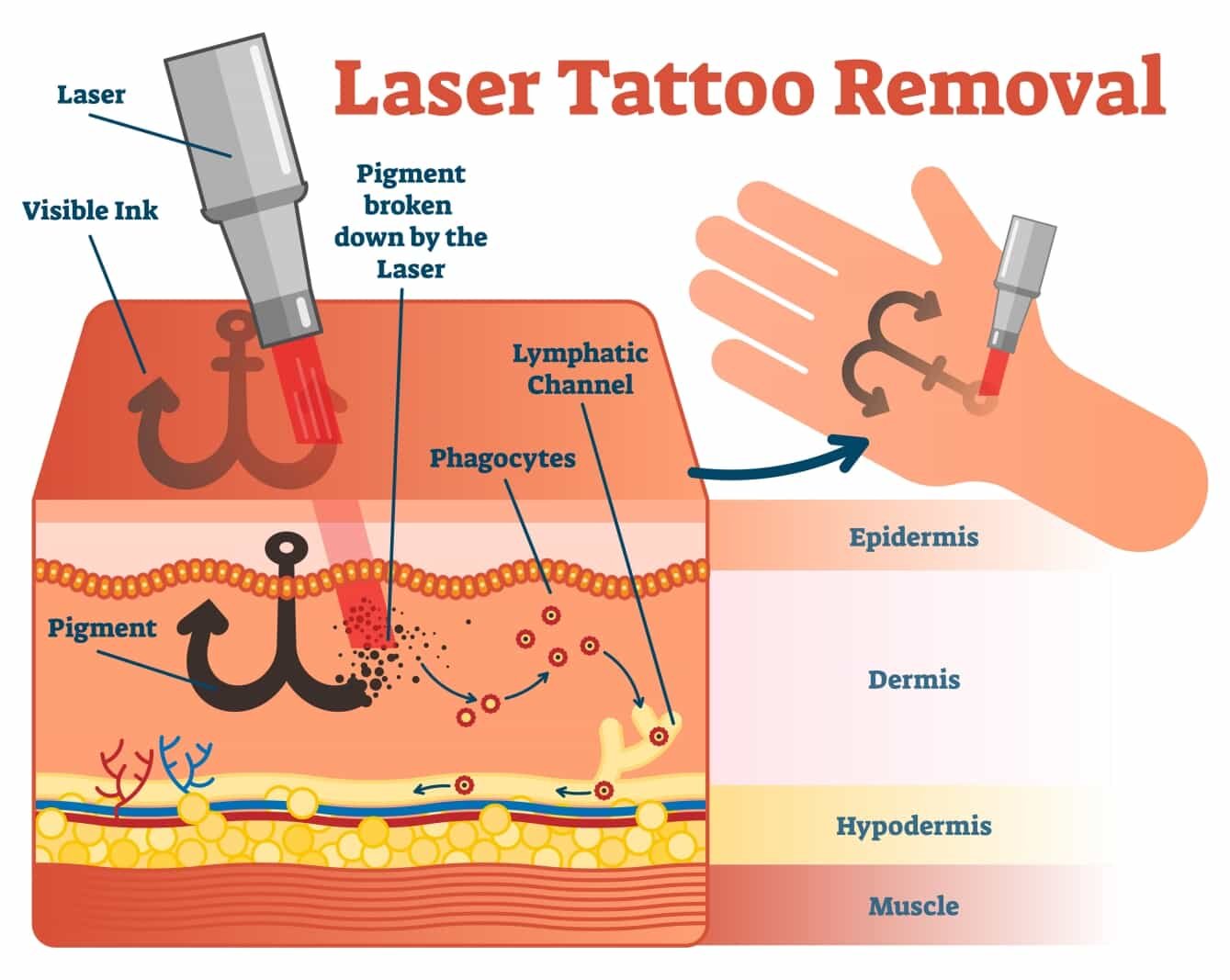
Does tattoo removal work?
Preview: How long has the procedure been around, and what is the success rate?
People have used laser tattoo removal for a long time to remove tattoos from any part of the body. The introduction of the first machines has led to improvements in technology.
The procedure is sure to succeed. Newer models are more powerful and gentle. They help the skin heal faster than ever.
Even tattoos in more delicate areas, such as those behind the ear, can be easily and safely removed.
Up to 25% of people with tattoos regret their choice. They often seek help from a specialist to remove them. Of these, all removal procedures are successful, with no complications.
Laser Tattoo Removal Side Effects. The Benefits and Risks
Preview: What you should know before going in for tattoo laser removal procedures.
Removing a tattoo poses few risks. Most of these risks appear when you first get the tattoo.
Individuals with skin problems should exercise caution. They should consult a dermatologist before beginning the removal process. This will help them know if it could harm their skin.
You should not remove tattoos if you have a skin infection. Be extra careful if the tattoo covers a scar. This is because, in these situations, the skin is extremely sensitive. The risk of unwanted side effects is higher than usual.
Possible Side-effects
This having been said, here are a few of the regular side effects that you may encounter during and after the procedure:
- The location from which the tattoo was removed may become infected if not kept clean and protected until it heals.
- Some types of pigment may not be entirely removed. Red ink often stays in the skin after the procedure; however, it fades and becomes barely noticeable.
- Hyperpigmentation or hypopigmentation may occur in some cases. The skin may react to the removal process. This means the affected area might become lighter or darker. This effect is more often encountered in the case of cosmetic tattoo removals, such as lip and eyeliner tattoos.
- The skin may also be scarred in a very small number of cases.
Benefits
- The procedure responds exceptionally well to black and blue tattoos and can remove them entirely.
- Laser tattoo removal is one of the safest and most effective methods available for removing unwanted tattoos. The possible side effects are less dangerous and less likely to happen than with dermabrasion or excision.
- This procedure causes less pain than other methods for removing unwanted tattoos. The pain is a bit stronger than the pain from getting a tattoo. A numbing cream can help reduce it so much that you can hardly feel it.

Tattoo removal before and after
Preview: What does the skin look like after having a tattoo removed?
Everyone’s skin reacts differently to laser tattoo removal. This is because factors such as dryness, location, tattoo age, and the type and color of the ink matter. You should consult a specialist before undergoing the procedure. They will explain the details and what to expect.
In most cases, the skin does not stay scarred. You may not be able to completely remove red ink and other intense colors. The area should heal in about 2 to 4 weeks.
Tattoo Removal Laser Machines for Cosmetic Laser Use. A Buying Guide Review
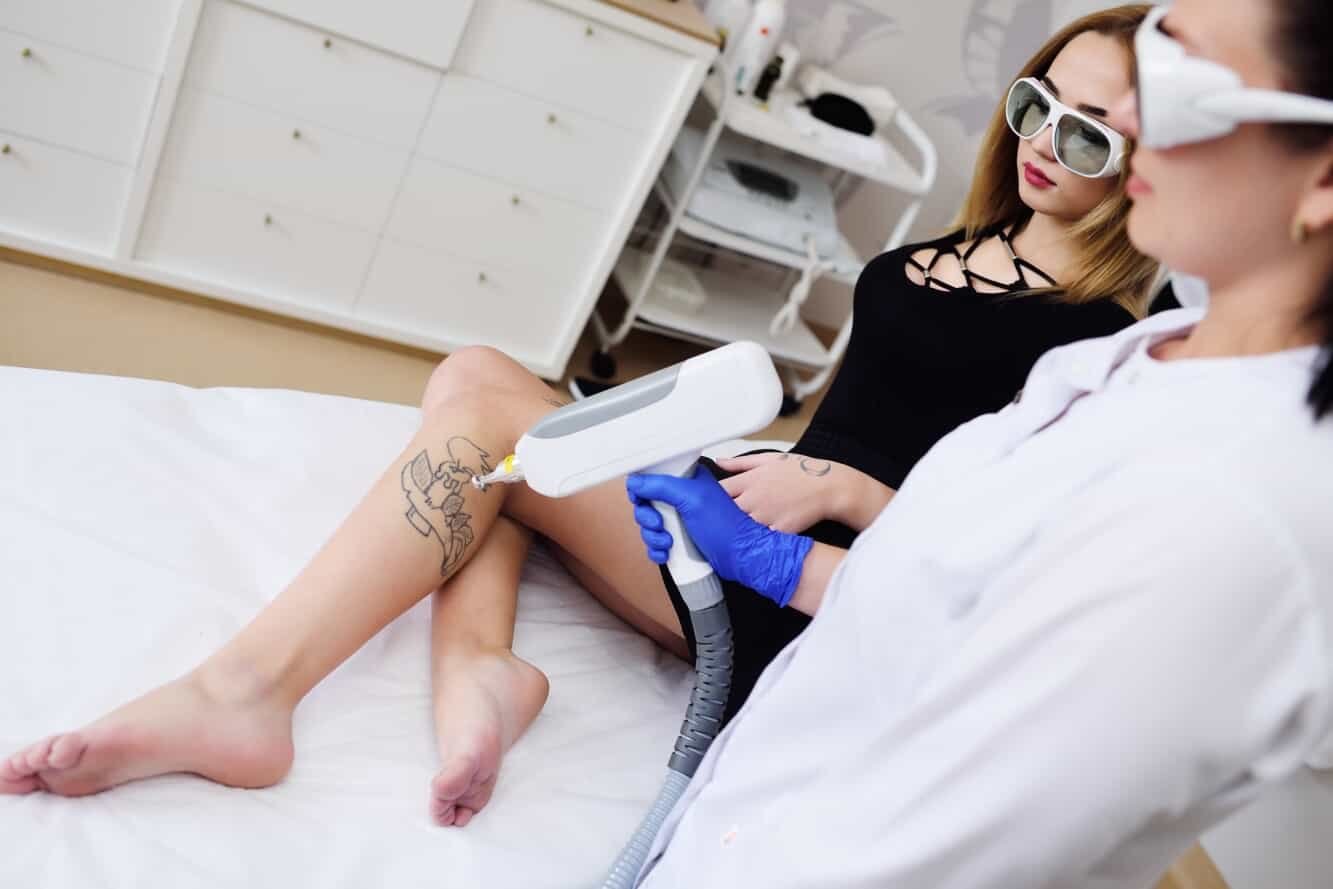
The technology that powers tattoo removal laser machines is constantly evolving, with more manufacturers entering the market each year. This means that it is essential to understand which devices can accomplish the task the fastest and with the least amount of discomfort. Below are some of the most popular and advanced pieces of equipment on the market. The world’s top tattoo removal salons and clinics use these, and specialists and patients alike highly praise them.
1. Discovery Pico – A state-of-the-art laser for painless and efficient tattoo removal procedures
The Discovery Pico is a modern medical laser. It can treat hyperpigmentation, acne scars, and remove tattoos. The device is one of the most powerful medical lasers available today. The top choice in clinics around the world generates higher energy levels. This makes it ideal for treating large surfaces or removing large tattoos in fewer sessions.
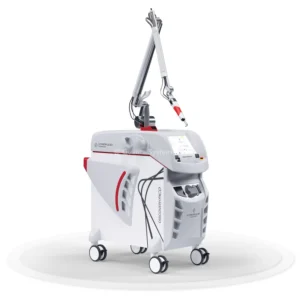
Specialists usually choose the Discovery Pico because of its ability to pulverize pigment particles, rather than simply fragment them. This not only helps the skin heal faster but also guarantees that the treatment will remove the pigment to a greater degree. Patients describe the fast light pulses as warm, non-painful pricks on the skin. This makes the device great for removing tattoos from sensitive areas.
You can remove most tattoos in 10 to 15 sessions. The only visible side effect is light redness on the skin. The redness typically subsides a few hours after the treatment.
Pros
- Less discomfort than with other devices – The speed of the pulses makes it difficult for the body to feel them. This makes the device more efficient and less painful than other devices, even on sensitive skin such as the neck and face.
- Pulverization, not fragmentation – The laser breaks down and spreads ink pigments. This makes the tattoo disappear with fewer sessions than other devices need.
- No risk of hyperpigmentation – The Discovery Pico has been designed to minimize the risk of hyperpigmentation after tattoo removal procedures.
2. Fotona StarWalker MaQX Ultra Performance Laser
The Fotona StarWalker MaQX is a high-end, multipurpose Q-switched laser system designed for a broad range of dermatological and aesthetic applications, including tattoo removal, pigment and vascular lesions, skin rejuvenation, acne and acne scar revision, and hair removal.
It also supports multiple wavelengths, handpieces, and special modes (“modes” = different pulse-duration or delivery regimes) to suit different targets (pigment, vascular, etc.).
Pros
- Versatility – Because of its multiple wavelengths and pulse/modes, it can treat a wide variety of conditions (tattoos, pigmented and vascular lesions, acne, scars, etc.). This makes it a “one-device” solution for many clinics.
- High effectiveness/speed – The high energy (up to 10 J pulses), large spot sizes, and powerful photoacoustic effects mean that treatments can be more effective per session, potentially reducing the number of sessions needed.
- Regulatory clearance – It has FDA clearance for various applicable uses, including tattoos, pigmented lesions, vascular lesions, acne and scar revision, and permanent hair reduction.
- All-skin-type compatibility – Due to the flexible settings and ability to modulate pulses, it performs relatively safely across different Fitzpatrick skin types (though of course, practitioner skill and correct settings still matter).
3. Cutera Enlighten – A dual pulse laser designed for multiple types of treatment
The Cutera Enlighten, like its predecessor, utilizes dual pulses to remove tattoos quickly and effectively. It also has dual wavelengths, which reduces the chance of leaving a faded shadow of the pigment. The Nanopulses target larger pigment particles and break them down. The nano pulses then fragment the ink, facilitating the body’s easy removal.
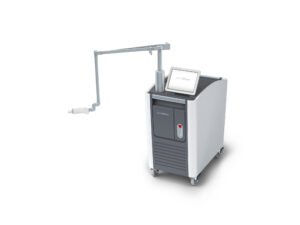
This laser not only removes tattoos but also revitalizes the skin. It aims to do this efficiently and with minimal discomfort.
Depending on the color of the pigment, the number of sessions required to eradicate a tattoo may vary. One can remove black and gray with greater ease than blue and red. However, the Cutera Enlighten can effectively remove any pigment from the skin.
Pros
- This device treats congenital issues and lesions. The 670 nm wavelength is effective for treating congenital pigmentary conditions.
- Multi-wavelength capabilities – The device can easily remove green and blue tattoo ink. These colors are usually harder to remove than others.
- Pico Genesis – The laser utilizes revolutionary technology to induce dermal disruption and quickly revitalize the skin.
4. Candela Picoway Laser – A reliable, FDA-approved medical laser
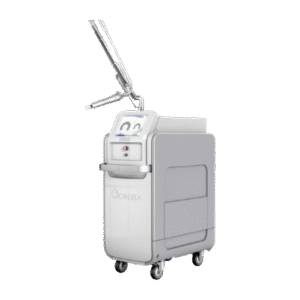
The PicoWay is one of the best ways to remove acne scars, tattoos, wrinkles, and dark spots. Many rejuvenation clinics worldwide utilize this device. Highly sought after by fashion models and other celebrities.
One of the primary qualities that distinguishes the PicoWay laser from other products on the market is that the skin does not require time to recover after treatment. This makes it useful for those with highly active lifestyles who cannot afford to wait until their skin heals after treatments.
You can use the device on any body part for any type of medical procedure, including tattoo removal. It does not harm the skin at all. This makes it very useful for procedures on the face, neck, and inner arms and legs.
Pros
- No healing time required – The device emits extremely short pulses of energy that do not harm the skin.
- Great for sensitive areas – The laser is gentle enough to use on delicate spots. You don’t have to worry about blemishes or scars.
- No heat – the device works on a photoacoustic principle, not photothermal. This means the skin does not overheat during treatment, eliminating the need for downtime before the next session.
5. Cynosure Picosure – A tattoo removal medical laser that comes with a boost function
The PicoSure model can use three different wavelengths. This helps make treatments and tattoo removal more effective. Although the design does not mainly focus on removing artificial ink from the skin, it can achieve this. Its three wavelengths allow it to target different colors simultaneously.
The Boost function of the laser can remove tattoos that are deeper than usual. This function increases power to reach pigment particles that other models may struggle to access.
A feature that makes the PicoSure different from other models is its ability to remove black tattoos. It works well on patients with darker skin. This method does not cause hypopigmentation, which means the treated area won’t be lighter than the surrounding skin.
Pros
- Using multiple wavelengths enables us to effectively remove brighter colors from the patient’s skin.
- The laser can adjust to remove black tattoos without causing hypopigmentation on darker skin. This process does not cause hypopigmentation in the treated area.
Summary
All featured devices are professional-grade solutions for safe, effective tattoo removal. Whether your clinic prioritizes speed, patient comfort, multi-functionality, or pigment versatility, there’s a laser system here that fits the bill.
Each machine brings something unique, and your best choice depends on the types of procedures you perform and your clinic’s overall goals.
While some may be more expensive than others, each one can get the job done in a dozen sessions or less. The time it takes to remove the pigment from the skin depends on the colors used and the patient’s skin type. However, unlike other tattoo removal techniques, they represent a healthier and far less painful solution.
However, all the lasers on this list are helpful in many situations. The choice of which one to buy depends on the procedures you want to focus on. It also depends on the purpose the laser will serve in your clinic.
Ready to upgrade your aesthetic equipment? Discover industry-leading Tattoo Removal Laser Machines and other advanced aesthetic devices at: http://kanawhamedical.com/product-category/aesthetics/
FAQ: Tattoo Removal Laser Machines — Doctor / Clinic
1. What is a tattoo removal laser machine, and how does it work?
A tattoo removal laser uses high-intensity light pulses to break down tattoo ink particles in the skin. The body’s immune system naturally eliminates these particles over time.
2. What types of lasers are best for tattoo removal?
The most effective types are Q-switched and picosecond lasers. Q-switched lasers work in nanoseconds and are great for dark inks. Picosecond lasers operate at a faster rate and are more effective for stubborn colors like blue, green, and yellow.
3. How many sessions do people typically need to remove a tattoo?
Most tattoos require between 6 and 10 sessions to complete. The exact number depends on factors like ink color, tattoo age, skin type, depth of ink, and the type of laser used.
4. What colors are hardest to remove with lasers?
Light colors, such as green, yellow, and turquoise, are more difficult to remove. They require more sessions and specific wavelengths, such as 755 nm or 694 nm, for optimal results.
5. Is laser tattoo removal safe for all skin types?
Laser removal is safe for most skin types when performed by trained professionals using appropriate wavelengths and cooling systems. Individuals with darker skin types may require lower settings to minimize pigmentation changes.
6. What side effects should patients expect after laser tattoo removal?
Common side effects include redness, swelling, scabbing, and temporary changes in skin pigment. With proper aftercare, these effects usually resolve within a few days to weeks.
7. What features should doctors look for in a tattoo removal laser machine?
Key features include different wavelengths like 1064 nm, 532 nm, and 755 nm. It has short pulse durations in the picosecond range. The device also features adjustable spot sizes, FDA clearance, and a built-in cooling system for patient comfort.
8. Are tattoo removal lasers FDA-approved?
Yes, many medical-grade tattoo removal lasers are FDA-approved and cleared. You should verify that the machine has approval for use in the U.S. and complies with local regulations.
9. What training is required to operate a tattoo removal laser?
In most U.S. states, only licensed medical professionals or certified laser technicians operating under physician supervision are permitted to use these lasers. The training team requires participants to complete training in laser safety and skin anatomy.
10. How should patients care for their skin after laser tattoo removal?
Patients should keep the area clean and dry, avoid sun exposure, apply soothing ointments, and avoid picking at scabs. Proper aftercare helps reduce the risk of infection and promotes faster healing.
11. How much do tattoo removal laser machines cost?
Professional laser machines range from $50,000 to over $150,000, depending on the technology, number of wavelengths, and included features.
12. What is the ROI for doctors offering tattoo removal?
Tattoo removal can be highly profitable due to the frequency of repeat visits per patient and low consumable costs. A single device can serve hundreds of patients, often paying for itself within the first year of use.




